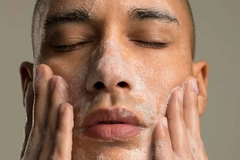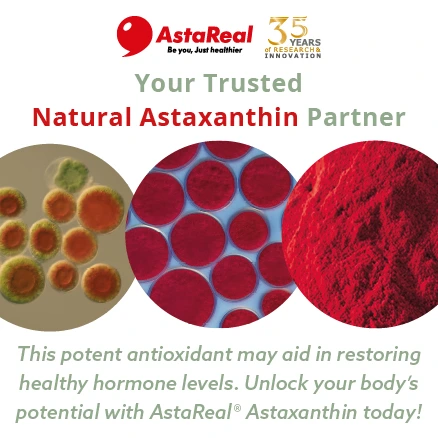Interpol joins COP-6 crackdown against illegal mercury cosmetics trade
Key takeaways
- Over 150 governments at COP-6 agreed on a global plan to crack down on mercury-added cosmetics, including cooperation with Interpol and the WCO.
- The WHO will develop a public health strategy to reduce demand for both mercury-added and non-mercury skin-lightening products.
- The decisions strengthen government-led action against these products, but leave a wording loophole unaddressed.
Last week at COP-6 in Geneva, Switzerland, over 150 governments agreed on a global plan to crack down on cosmetics containing mercury. The plan will see policing agencies, including Interpol and the World Customs Organization (WCO), collaborate to investigate where the products are manufactured, transported, and sold.
COP-6 is the sixth gathering of governments under the Minamata Convention. The Minamata Convention is a treaty of governments that meet to negotiate and update global rules aimed at reducing mercury use, trade, and pollution due to the heavy metal’s toxic health effects.
At the conference, delegates agreed to broaden the scope of action beyond mercury-containing formulas. The WHO was asked to prepare “an illustrative national public health-wide strategy” that covers both mercury-added cosmetics and “skin lightening products that may not contain mercury.” The WHO signed off on this exact language.
Civil society groups that attended the conference last week have interpreted the WHO’s inclusion of skin-lightening products, whether tainted with mercury or not, as a recognition of harmful beauty standards and skin color-based bias.
The WHO’s decision signals that public health may address both the toxic ingredients and the societal pressures driving their demand.
“In its decision, COP-6 clearly indicated the importance for parties to continue their work to phase out manufacture and trade in mercury-added skin lightening products,” Michael Bender, international co-coordinator at the Zero Mercury Working Group (ZMWG), tells Personal Care Insights.
However, Bender asserts that while COP-6 sets the direction, enforcing the crackdown will require sustained cooperation and collaboration.
“When the treaty was developed — Article 4 on products — there was a general recognition that governments needed to focus on simultaneously reducing supply and demand for mercury-added products,” he says.
He notes that the COP encouraged governments to utilize the Minamata Convention’s support mechanisms when facing enforcement challenges. Parties facing ongoing difficulties were encouraged to notify the secretariat and utilize the support available under Article 14, including capacity building, technical assistance, and technology transfer.
COP-6’s decisions mark the strongest call yet for parties to the treaty to actively report gaps, seek assistance, and engage with compliance procedures.
Compounds pipeline
Global efforts to phase out mercury-added cosmetics are undermined by a loophole in the Minamata Convention that allows mercury compounds to move legally through global supply chains.
These compounds, which can release mercury and pose similar health risks, are sold as chemical feedstocks and only become illegal once manufacturers or small-scale mixers blend them into skin-lightening creams.
This practice, often described as “cottage-industry” production, enables illegal products to enter markets despite the bans.
.webp) Cultural pressures and Eurocentric beauty ideals continue to fuel demand for skin-lightening products.Delegates have noted that informal, small-scale “cottage-industry” production poses a growing challenge for many countries as the products are often made in unregulated settings, sold through word-of-mouth networks, and move easily across borders.
Cultural pressures and Eurocentric beauty ideals continue to fuel demand for skin-lightening products.Delegates have noted that informal, small-scale “cottage-industry” production poses a growing challenge for many countries as the products are often made in unregulated settings, sold through word-of-mouth networks, and move easily across borders.
The COP-6 draft decision, MC-6/ [-]: Advancing Work Related to Mercury-Added Cosmetics, does not address mercury compounds. Instead, the draft directs the WHO to help countries reduce demand.
“Addressing issues related to ‘cottage-industry’ production, at the grassroots level, will present additional challenges — particularly for developing countries with more limited staffing and resources,” Bender says.
Chemical cultures
Mercury-containing skin-lightening products are often in higher demand in lower-income countries. Bender argues that reducing demand is essential — when consumers stop seeking out skin-lightening products, supply chains will begin to shrink.
“It has to do with Eurocentric beauty standards from colonial times that have been transposed into countries in different ways. It has to do with colorism. There is a demand,” Bender says.
He explains that the global mercury cosmetics crisis has been developing over many years, and that solving the issue “will take the development of a concerted, long-term, and effective internationally coordinated strategy, focusing simultaneously on both supply and demand reduction.”
“National and regionally coordinated efforts that complement the global strategy will enhance efforts and continue to build momentum globally toward solutions, but again, this will not happen overnight.”
He adds that the WHO’s strategy could help governments address both supply and demand.
“The assistance outlined in paragraph seven, for WHO to provide national public health-wide strategies on reduction measures for [skin lightening products containing mercury], generally could assist parties in developing their own demand reduction strategies for all skin lightening products,” says Bender.
Elena Lymberidi-Settimo, senior advisor on mercury at the European Environmental Bureau (EEB) and international co-coordinator at the ZMWG, tells us: “It’s critical that the demand side — the culture — also starts changing, and governments need to work on that as well so that both sides move together and eventually meet.”
.webp) Communities worldwide continue to face exposure to unsafe skin-lightening practices.According to Bender, effective reduction strategies that target the demand for these products could help curtail both major manufacturing of mercury-added skin lightening products, and also “cottage industry” production.
Communities worldwide continue to face exposure to unsafe skin-lightening practices.According to Bender, effective reduction strategies that target the demand for these products could help curtail both major manufacturing of mercury-added skin lightening products, and also “cottage industry” production.
Chasing digital trails
Online platforms play a critical role in the circulation and trade of mercury-containing skin-lightening products. The rise of global e-commerce has shifted the trade from suitcase imports to a fully digital supply chain, where bulk orders move effortlessly across borders.
“One promising development that we have been pushing for is to engage the global cops, namely World Customs and Interpol, in assisting parties ‘to further investigate the major sources of manufacture, import, and export of mercury-added cosmetics,’” Bender says.
The joint approach mirrors existing international operations that already target illegal online health products. Bender points to Interpol’s long-running Operation Pangea as evidence that the infrastructure for coordinated enforcement already exists.
“Our research shows that there is already extensive experience in collaborating in this area worldwide by international agencies, governments, and the business community. One example is Operation Pangea, now in its 17th year. It is a global operation coordinated by Interpol that aims to detect and disrupt the sale of illegal health products online.”
Operation Pangea’s week-long initiative targets the backbone of digital trade — “Internet infrastructure, electronic payment system, and delivery service.”
Delegates say this kind of coordinated model could be adapted to track illegal mercury cosmetics across online marketplaces, shipping channels, and cross-border payment systems.














